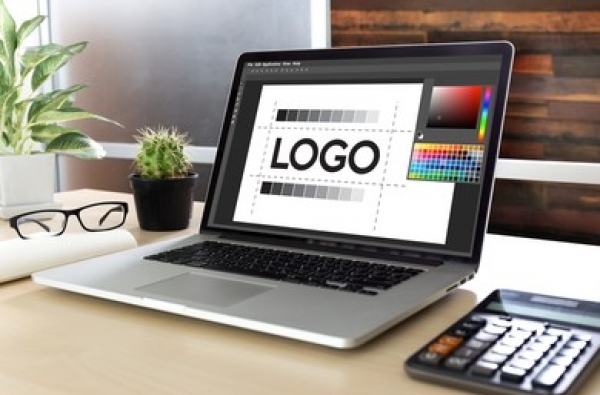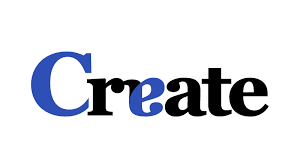Last Updated on August 8, 2022 by

Logos have become the center of commercial branding, and brands are constantly vying for innovative, eye-catching logos that can be representative of their business. These symbols which we have so easily accepted into mainstream popularity are actually well crafted after a ton of research and effort, as they symbolize the very essence of the brand. Therefore, designing a logo must follow some basic design philosophy in order to work well with consumers. Here are some basic rules that are a must in logo designing.
1) Communicative Features of a Logo
The basic design philosophy is that a logo should communicate information about the brand. This information can be the name, the core value, the product, or the service being provided by the brand. It can also communicate a larger story, hidden like an easter egg (for example, the Amazon logo features a smile stretching from A to Z to show the vast variety of products on the online store).
Depending on the simplicity or extravagance of the logo, consumers can decipher even the overall message and image the brand wants to convey. Logos also follow current trends to keep up with consumer perception (like the recent trend of minimalistic redesigns of numerous logos like WB and others). Your unique logo design service Florida should be easy for your clients to remember. In general, a logo must communicate something. What are the things a logo can communicate?
- Name
A logo can simply communicate the name of the company in the logo, like Coco-Cola or Ford. After a long period of repeated use, the name can be removed from the logo itself, keeping only the visual imagery. For example, Twitter earlier had its name in the logo, but now features only the iconic blue bird which has become synonymous with the brand. This phenomenon is called debranding.
- Visual representation
The logo can visually represent the brand. Taco Bell’s logo has a bell in it, and the Windows logo features a window.
- Product
The logo can show what product the brand is about. Burger King’s logo has a burger in it, and the Sprite logo features a lime.
- Brand Image, Sense, Or Feeling
A logo can communicate a certain image or mood as well. The Disney Logo is designed to fill you with nostalgia about childhood memories, and the Lego logo conveys a sense of playfulness.
- Story
Logos can also tell stories and anecdotes. The Starbucks logo is an image of the Norse woodcut siren, which makes it stand out and refers to mythology and storytelling, making the logo intriguing and unique.
2) Relevance of a Logo
Your logo is representative of the brand, so it is important to ensure that the logo actually has something to do with the brand itself. An attractive logo is fine, but direct reference to your brand is more important for the logo than pretty designs. The MSN logo which features a colorful butterfly does not have anything to do with the product MSN, and it does not even convey any kind of brand image. The Airbnb logo looks like two paperclips and again has no relevance to the brand itself. These are bad designs that fail to communicate anything to the consumers as they do not have any relevance to the product or service.
3) Distinctiveness of a Logo
A logo should be unique, memorable and recognizable. It should avoid any visual cliches that are overused. For example, a simple google search of organic food brands will take you to brands that will feature a leaf or some kind of plant in their logo 9 out of 10 times. While such a design does communicate the brand’s product and message, it is overused and will be immediately forgotten.
A better way to do it can also be to put a hidden surprise in the design. The arrow hidden in the FedEx logo, or the 31 hidden in the Baskin Robbins logo are some good examples. It makes the logo stand out, and consumers will always look at the logo to check these hidden surprises often.
4) Timelessness of a Logo
Do not design your logo around an object that has been around only recently. Ferrari features a horse, Starbucks features a mythical creature, and Twitter features a bird. These objects have been and will be around for a long time, making them timeless. Designing your logo around some new technology or contemporary objects is never a good idea, as you never know how relevant these new products will stay.
5) Simplicity of a Logo
The simplest of logos are the best. The more simple they are, the easier they are to remember. This is also the reason why minimalist logos are increasingly popular and why most brands are changing their designs to remove unnecessary elements. The Pringles logo features a simpler design these days, and so do the Pepsi logo and the Mcdonald’s logo.
This does not mean all logos have to be simple. Luxury brands like the Ritz-Carlton use more elaborate logos to convey the exclusivity of their brands, to tell consumers that these products are not obtainable easily, making them special. It all completely depends on what the brand wants to convey: if you want mass appeal, simpler logos are the way to go. Overall, the golden rule is this: no matter how simple or complex the logo might be, it should not have anything in it that is not required there.
6) Execution of the Logo Design
No matter how cool your idea might be, bad execution can make it look terrible. A logo should be well-crafted and executed, and a cool idea is not simply enough. Even a weak idea can make itself iconic if executed optimally. The Google logo is a good example. It was not based on a refreshing idea to begin with, and looked crude at the beginning with its poor execution. But as the company grew, the logo has become iconic due to constant refinements.
There are some basics to look out for. The logo should have consistency, as in, all of its elements should have uniformity in sizing, and proportionality in scale. The shapes should be accurate as well. If you want your logo to be inside a circle, the circle should be uniform and not elliptical or oval. The typography should be equally consistent and use the same size and font if your logo is your brand’s name.
7) Versatility of a Logo
Your logo should be versatile for use. It should be good enough to be a part of a billboard, a business card, a pamphlet, or any other material. Check if it looks pretty both in color and in black and white. It should ideally be designed in a vector-based program, so that it does not lose its crispness if adjusted in size.
Conclusion
Obviously, the arena of logo design is a creative space, and logo designing is a creative endeavor. Rules are flexible if creativity allows them to be. The trick is to make sure that the basic idea of a logo is not lost, and that its uniqueness is maintained. Great logo designs last for decades, so obviously it would take a huge effort to come up with good ones.

